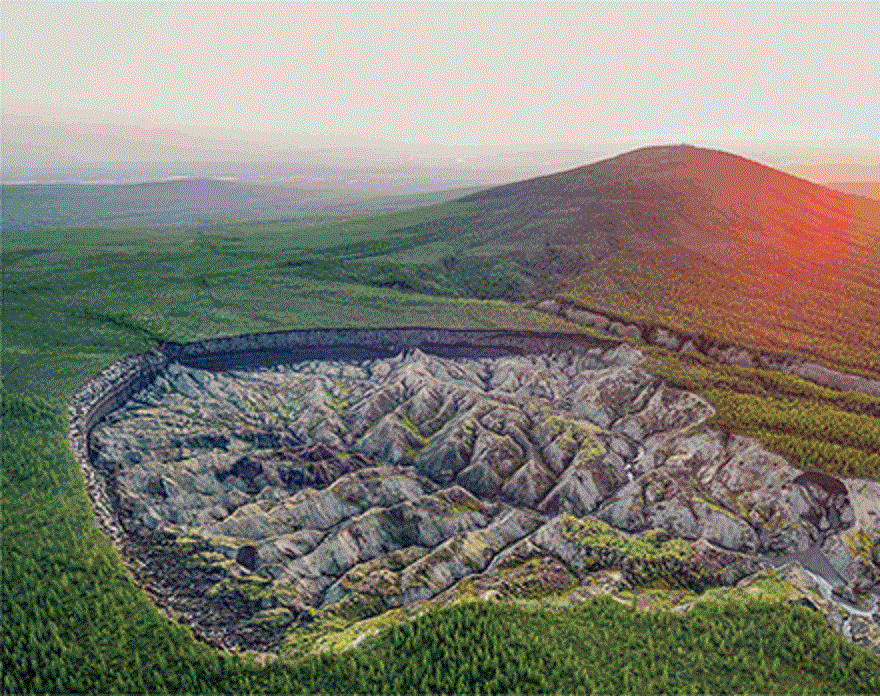Circumpolar Arctic Permafrost Distribution (credit: NSIDC & International Permafrost Association)
Something unusual is happening to areas of permafrost in the Russian Far East and the high mountains in South Asia. Changes to the frozen landscape are now being observed in 'real time'.
According to the National Snow and Ice Data Center (NSIDC) in Colorado, information on permafrost (frozen ground) is critical to "understanding environmental change, validating climate models, and building and maintaining structures in seasonal frost and permafrost regions". Permafrost covers nearly 9-million square miles (~24%) of the land surface in the Northern Hemisphere and is found as far north as 84°N in Greenland and as far south as 26°N in the Himalayan mountain ranges. Dramatic and expanding melting events have been seen in the Siberian tundra and now in the frozen valleys of the Tibetan plateau, the Earth's Third Pole.
In Russia's Yakutia region of Siberia, a gigantic chasm has been opening in the permafrost. Researchers with the Institute of Applied Ecology in Siberia and Germany's Alfred Wegener Institute have been observing the massive chasm grow for several years. Its expansion indicates the crater is collapsing deeper and deeper into the once frozen ground. The defrosted slump has exposed forest stumps buried thousands of years earlier as well as the bones of Pleistocene mammals including Woolly Mammoths. The studies indicate a combination of warmer air temperatures and large-scale deforestation mutually reinforced the melting permafrost in an environmental 'feedback loop'. Removing the cooling effect of permafrost forests has allowed more sunlight and warmer air to reach the ground during summer which increases the slump's expansion each year. Local Siberian's are calling it, Doorway to the Underworld.

'Doorway to the Underworld' in Yakutia (Research Institute of Applied Ecology of the Far North) Research Institute of Applied Ecology of the North Research Institute of Applied Ecology of the North
Thousands of miles south of Siberia, villagers living above 12,000 feet in Yushu Tibetan Prefecture of Qinghai Province in China observed blocks of mud flowing like a river of lava. Block of mud and grass were churned by melting permafrost higher on the Tibetan Plateau due to solifluction. Solifluction is typically measured in inches/year and results from waterlogging of soil on top of frozen ground. Permafrost is impermeable to water, so the covering of soil and turf slide downslope due to gravity. The Tibetan villagers observed mud blocks flowing like a river destroying anything in its path. Due to the remoteness of the Tibetan Plateau, information on the extent of the melting and any exact understanding to cause and effect of the permafrost melting is still limited. Considering that the mountainous plateau is the water source for most of south and east Asia's major rivers, more studies would be wise to do.
While these two cases of melting permafrost are dramatic, the Alfred Wegener investigators placed the Siberian event into a bigger picture of environmental change and its importance:
"Global estimations of carbon stored in permafrost is [the] same amount as what's already in the atmosphere."
WHB